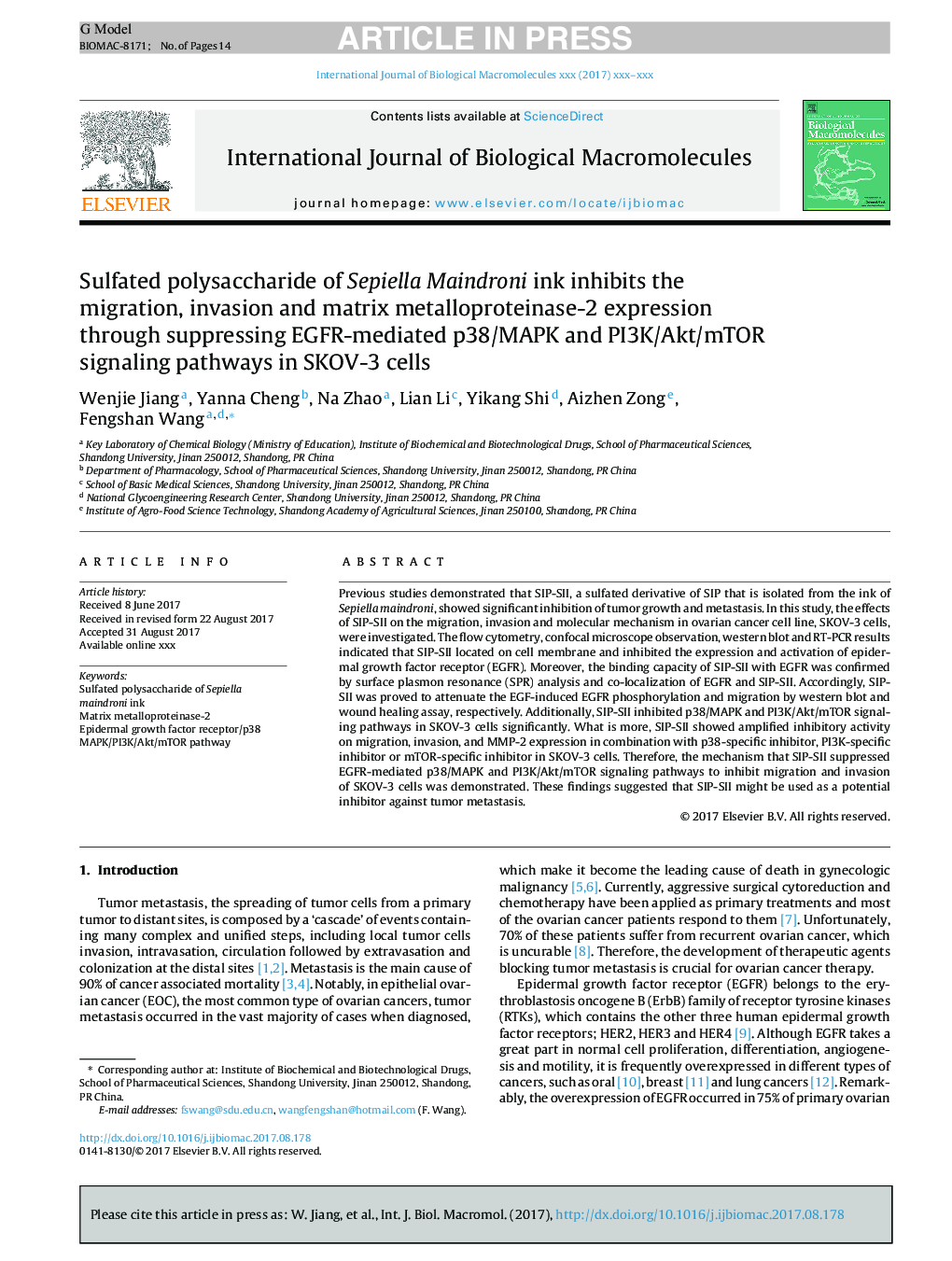| Article ID | Journal | Published Year | Pages | File Type |
|---|---|---|---|---|
| 8328933 | International Journal of Biological Macromolecules | 2018 | 14 Pages |
Abstract
Previous studies demonstrated that SIP-SII, a sulfated derivative of SIP that is isolated from the ink of Sepiella maindroni, showed significant inhibition of tumor growth and metastasis. In this study, the effects of SIP-SII on the migration, invasion and molecular mechanism in ovarian cancer cell line, SKOV-3 cells, were investigated. The flow cytometry, confocal microscope observation, western blot and RT-PCR results indicated that SIP-SII located on cell membrane and inhibited the expression and activation of epidermal growth factor receptor (EGFR). Moreover, the binding capacity of SIP-SII with EGFR was confirmed by surface plasmon resonance (SPR) analysis and co-localization of EGFR and SIP-SII. Accordingly, SIP-SII was proved to attenuate the EGF-induced EGFR phosphorylation and migration by western blot and wound healing assay, respectively. Additionally, SIP-SII inhibited p38/MAPK and PI3K/Akt/mTOR signaling pathways in SKOV-3 cells significantly. What is more, SIP-SII showed amplified inhibitory activity on migration, invasion, and MMP-2 expression in combination with p38-specific inhibitor, PI3K-specific inhibitor or mTOR-specific inhibitor in SKOV-3 cells. Therefore, the mechanism that SIP-SII suppressed EGFR-mediated p38/MAPK and PI3K/Akt/mTOR signaling pathways to inhibit migration and invasion of SKOV-3 cells was demonstrated. These findings suggested that SIP-SII might be used as a potential inhibitor against tumor metastasis.
Keywords
Related Topics
Life Sciences
Biochemistry, Genetics and Molecular Biology
Biochemistry
Authors
Wenjie Jiang, Yanna Cheng, Na Zhao, Lian Li, Yikang Shi, Aizhen Zong, Fengshan Wang,
